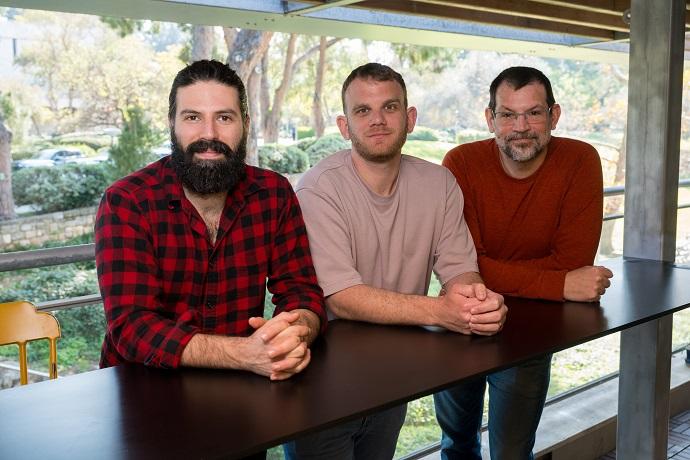A supernova – an exploding star – has been a phenomenon that has intrigued humanity for thousands of years, long before the invention of the telescope. But while we now understand that these explosions, burning with the power of a hundred million suns, are the source of the building blocks of life in our world, the conditions that cause the star to destroy itself are still not clear enough. The main reason for this is that a supernova cannot be predicted in advance, so scientists have no choice but to study it retroactively. Scientists from the Weizmann Institute have succeeded in taking a significant step towards a deeper understanding of these exploding stars, when they managed to "reach" the scene of the explosion as it was happening, and thus successfully chart it with an unprecedented level of detail. Their charts included data not only from the process of the explosion but also from the star's last years – a rare achievement that could shed light on the processes leading to star explosions. The new findings are published today in the scientific journal, Nature.
Supernovae were once considered a rare phenomenon: the last supernova observed in our galaxy exploded about four hundred years ago, and one can only imagine its effect on our ancestors, who suddenly and without explanation detected a new bright glitter in the sky. Innovations in telescopic means allow us, today, to observe explosions not only in our own galaxy but also in more distant galaxies and to collect data that until recently was unimaginable. Still, the main problem in studying supernovae remains; astrophysicists are forced to act as space archaeologists who arrive at the scene of the explosion after the fact and scramble remains from the rubble. "This is part of what makes the supernova we envisioned special", says doctoral student Erez Zimmerman, from Prof. Avishai Gal-Yam's group in the Department of Particle Physics and Astrophysics. "This is the first time we've observed, in ultraviolet radiation – where most of the light is emitted – a collision between the material emitted by the supernova and the material from which the star's mantle was assembled".

Rare luck: in the front row of a nearby supernova
The supernova was discovered by chance by Japanese astronomer Koichi Itagaki. Itagaki passed on the information to colleagues around the world, including Prof. Gal-Yam, who recognized the opportunity and immediately contacted the doctoral students in his research group. While various researchers around the world pointed telescopes on earth at the supernova, Prof. Gal-Yam's group asked NASA to conduct research with the Hubble Space Telescope, hoping that they might have the chance to see the explosion and the material scattered around it. To their delight, they got a chance and got a front-row seat to the closest supernova to Earth in decades: a red supergiant star that exploded in the windwheel galaxy (also called Monsieur 101) next door to the Milky Way.
While the question of luck provided the opportunity and NASA the means, scientists still had to act quickly and very resourcefully to gather the precious data in real time. The indication of a supernova came on Friday night, and scientists knew that if they waited until Monday – the beginning of the week in the United States – valuable information would be lost. If that wasn't enough, to intensify the drama, Sunday was the date of Zimmerman’s wedding, the doctoral student who led the research alongside his colleague Ido Irani, also from Prof. Gal-Yam's group. The scientists successfully won the race against the clock, taking telescopic measurements, measuring and calculating the required information, and handing the data, within hours, to their NASA colleagues, allowing the Hubble Space Telescope—a powerful instrument that normally runs very laboriously—to look away from the explosion as it happened. "It's rare in scientific work that there is research that is so time-dependent", says Prof. Gal-Yam. "Most science projects don't happen on a Friday night, but the opportunity arose, and we had no choice but to rise to the challenge and meet it."

The most detailed portrait of a supernova ever
Not only were the researchers able to provide the measurements to NASA in time, allowing Hubble to collect the necessary data, due to its relative proximity to the site of the explosion, it turned out that Hubble had observed this galaxy many times before. The members of the group, along with their colleagues in other research groups, went to the NASA archives and retrieved photographs of the star before the explosion – when it was "just" a red giant on its deathbed. All this allowed scientists to create the most detailed portrait of a supernova ever, combining the last years of its life with its death.
Analyzing the ultraviolet light data obtained from Hubble, confirmed by other satellites, allowed scientists to measure the amount of material emitted from the star in the explosion. From the measurement, an unusual hypothesis emerged: "When we compare the mass of the star after the explosion, which we measured from the explosion itself, to the mass of the star at the beginning of its life, there remains a significant residue", says Irani. "The difference makes it possible to determine, with very high probability, that the supernova left behind a black hole – into which the remaining missing mass was probably swallowed."
"Stars behave unpredictably at the end of their lives. They become unstable, and usually we can't be sure what complex processes took place at their core, because we only begin to study them after their death – when most of the information has already been lost," says Prof. Gal-Yam. "Because of the proximity of the star and the quality of the data collected, this study presents a rare opportunity to understand better the mechanisms that lead to the end of a star's life and the formation of something entirely new," adds Zimmerman.











